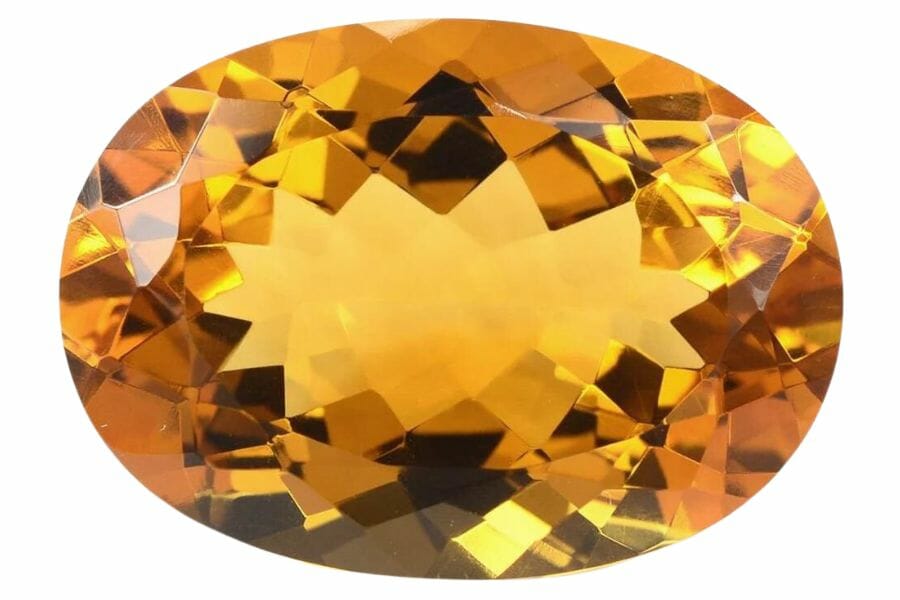Both citrine and topaz are popular for their beautiful yellow and golden hues. However, their chemical compositions and structures differ, leading to unique physical and optical properties.
Diving into the world of gemstones often presents us with intriguing comparisons. Comparing citrine vs topaz brings forward an interesting mix of similarities and contrasts.
Despite their differences, it’s easy to see why they are often mistaken for one another. Both stones are available in a variety of colors beyond yellow, but it’s their golden tones that tend to be the most celebrated.
Join us as we dive into the world of citrine and topaz!
Citrine vs Topaz – The Major Differences
Citrine and topaz are both beautiful gemstones, but they’re not the same. They have different colors, origins, and other cool features that make them unique. Let’s dive in and explore what sets them apart from each other!
Colors – Citrine’s colors range from yellow to deep orange
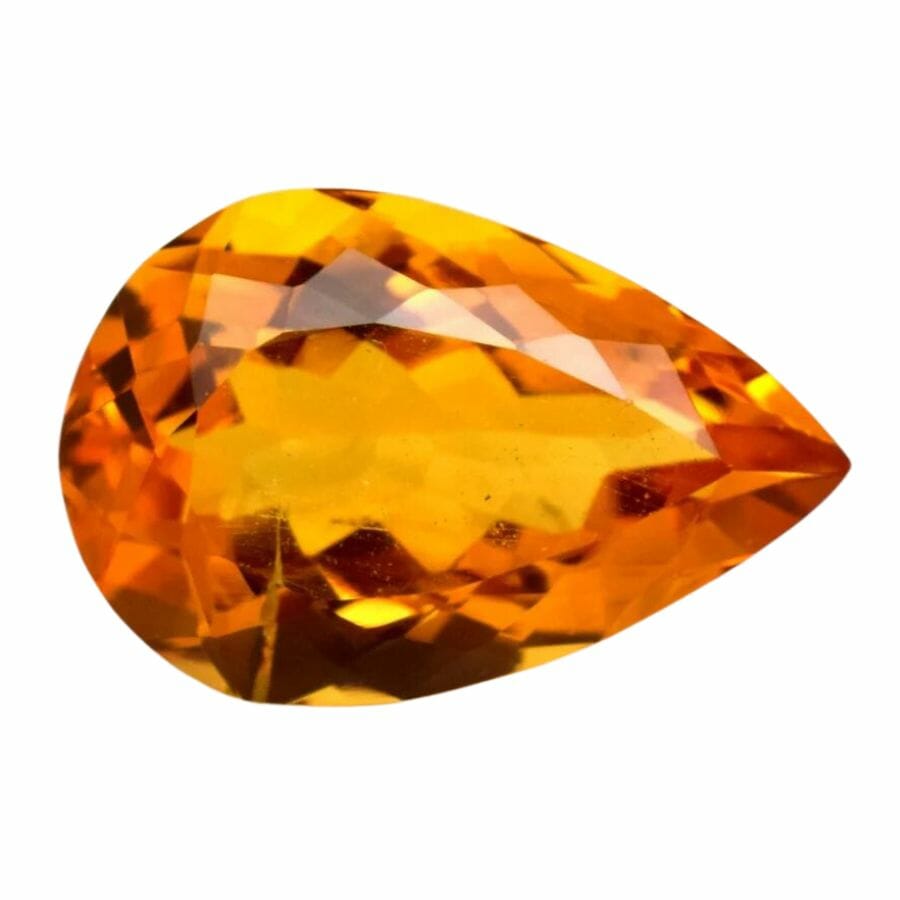
Citrine and topaz, though both admired for their captivating appearances, have distinct color variations that set them apart. Citrine is most known for its shades of yellow.
These shades can range from a pale, almost pastel yellow to a deep, orange hue.
For some, the color might remind them of a soft morning sunlight, while the deeper shades can look like the glow of an evening sunset. The reddish-orange variants are especially prized, evoking the warmth of autumn leaves.
Topaz, on the other hand, is like a rainbow of choices when it comes to color. It’s truly versatile.
While it can match citrine in its golden-yellow tones, it doesn’t stop there. A stroll through a gem market might reveal topaz in stunning blues, from icy pale shades to rich, ocean-like tones.
Some pieces might even sparkle in lovely shades of pink or have the subdued elegance of grays and browns. There’s also colorless topaz, which looks like a drop of clear water, and rare green variants that are a treat for the eyes.
Those looking for something truly unique might even stumble upon reddish-pink or red topaz. This wide spectrum makes topaz a favorite for many who adore variety.
Hardness – Topaz is the harder mineral
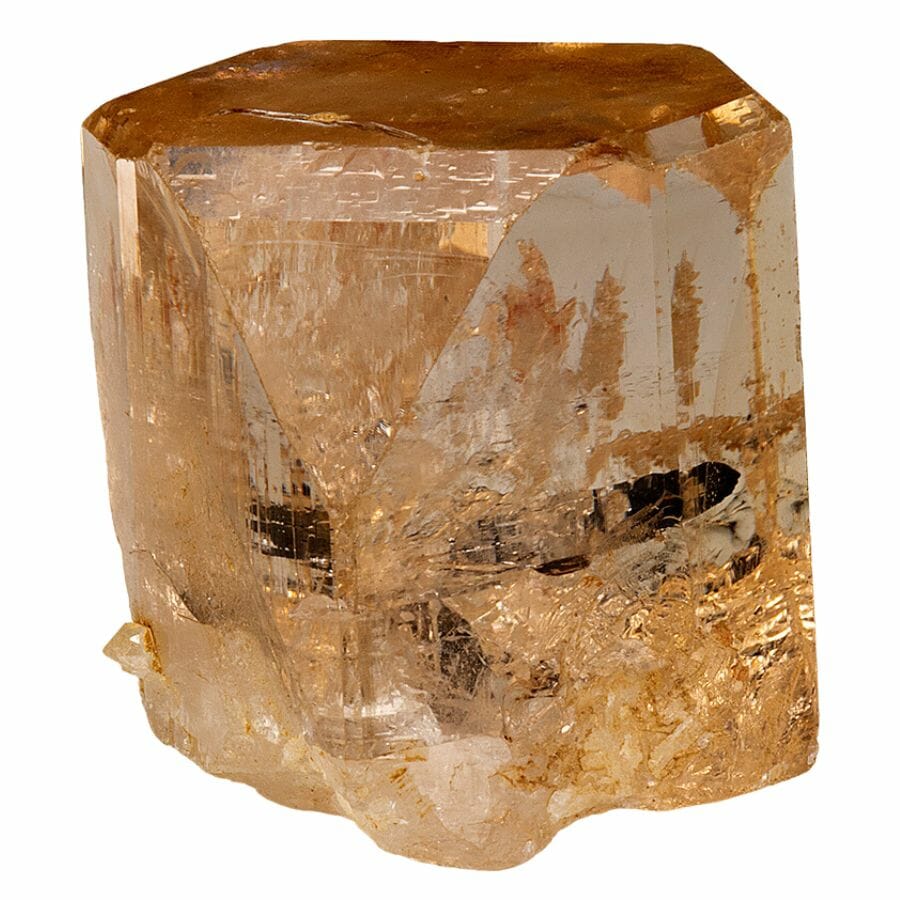
You may be wondering how tough or scratch-resistant gemstones are. That’s where the Mohs hardness scale comes into play. This scale ranks minerals based on their ability to scratch or be scratched by others. Talc which is very soft and easily broken is a 1 on the scale and diamond which is incredibly hard is a 10.
Citrine, known for its lovely yellow to reddish-orange hues, holds its own pretty well. With a Mohs hardness of 7, it’s fairly resistant to scratches.
This makes citrine a good choice for everyday jewelry like rings or bracelets that might get knocked around a bit. Even with daily wear, citrine can maintain its smooth, polished look.
Then there’s topaz. This gemstone is a step ahead when it comes to hardness. Clocking in at a solid 8 on the Mohs scale, topaz is even tougher than citrine.
This added toughness means that topaz is less likely to get scratched, even in rougher conditions. If someone’s looking for a gem that can stand up to a bit more wear and tear, topaz is a top contender.
So, while both citrine and topaz are durable choices for jewelry, topaz takes the lead in the hardness game. But either way, with proper care, both gems can last a long time, shining brightly and looking as stunning as ever.
Crystal structure – Citrine crystals look like a six-sided prism
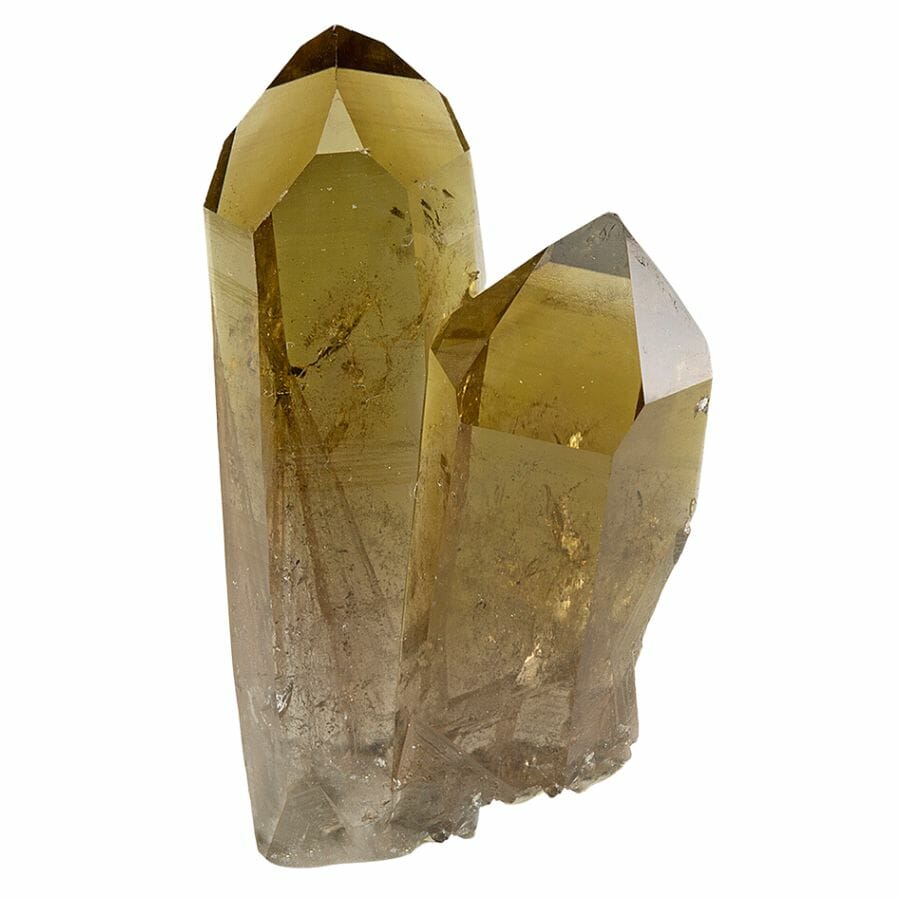
Understanding the crystal structure of gemstones can be a fascinating journey. It’s like looking into the secret architecture of these beautiful stones.
Citrine, with its warm hues, is a variety of quartz. Quartz is known for its hexagonal crystal system. When imagining a hexagonal structure, think of a shape with six sides, similar to the structure of a honeycomb in a beehive.
This pattern influences how the crystal grows and how it breaks, giving citrine its unique properties and appearance.
Topaz, on the other hand, boasts an orthorhombic crystal system. Picture a stretched-out box with all sides of different lengths.
This means that if someone were to stumble upon a raw, uncut piece of topaz, it might look like elongated prisms with flat, almost plate-like terminations. This structure gives topaz its unique sparkle and the way it refracts light.
In essence, while both citrine and topaz are mesmerizing in jewelry and as raw crystals, their inner blueprints – or crystal structures – are quite distinct.
The hexagonal system of citrine and the orthorhombic system of topaz play a significant role in making each of these gemstones one-of-a-kind.
Cleavage – Topaz breaks in perfectly smooth planes
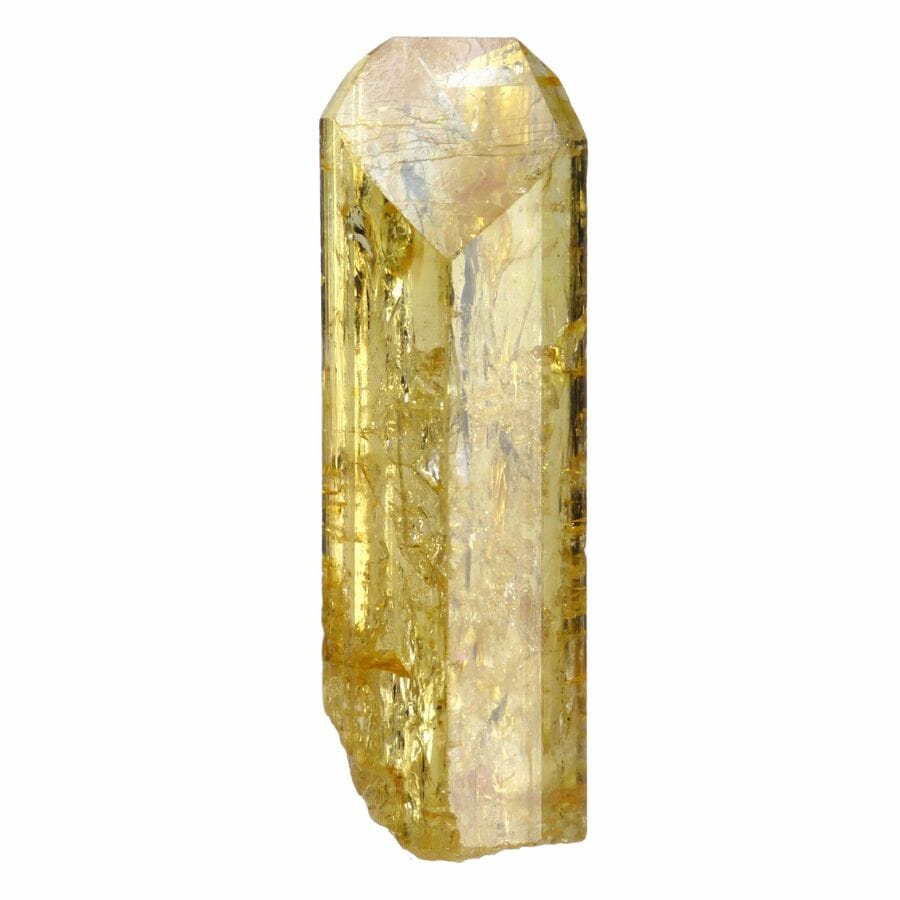
Cleavage in gemstones refers to how they break or split along specific planes. It’s a bit like how wood is easier to split with the grain than against it.
This property is essential, especially for gem cutters, as it influences how a stone can be shaped and faceted.
Citrine, with its alluring golden shades, is pretty straightforward in this aspect. It generally doesn’t have cleavage, meaning it doesn’t have preferred planes where it breaks easily.
Instead, when citrine does break, it often does so in a conchoidal fracture. Imagine the way a thick piece of glass shatters, creating curved, shell-like patterns. That’s similar to how citrine behaves when subjected to force.
Topaz presents a different challenge. It has perfect cleavage in one direction. This means that if pressure is applied in that specific direction, topaz will split cleanly and smoothly.
For gem cutters, this can be a bit of a tightrope walk. They need to be super careful when shaping and setting the stone, ensuring they don’t apply force in that particular direction.
If they aren’t cautious, even a slight mishap can cause a beautifully colored topaz to split, reducing its value.
Chemical composition – Citrine is a variety of quartz
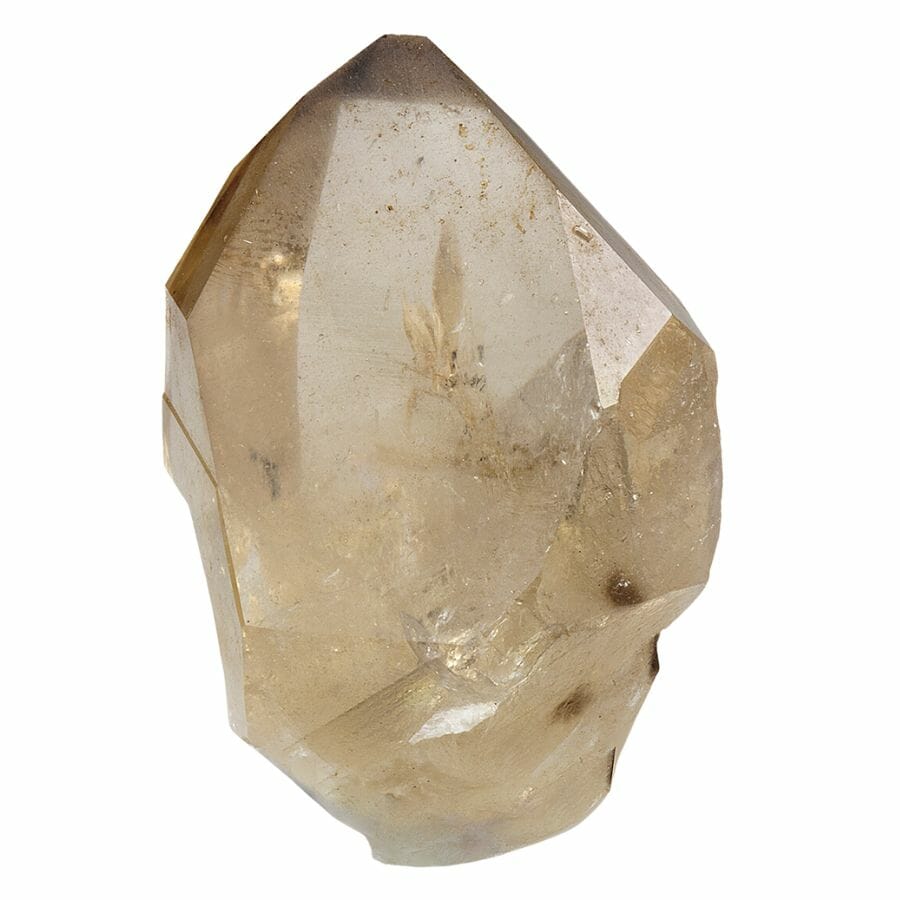
Diving into the world of gemstones isn’t just about admiring their beauty; it’s also about understanding what they’re made of. At a glance, citrine and topaz might seem similar, but their chemical compositions tell a different story.
Citrine’s composition is relatively simple. It’s a form of silicon dioxide.
In fact, citrine is a type of quartz that gets its beautiful yellow to reddish-orange shades from trace amounts of iron. It’s this simplicity in its chemical make-up that makes citrine both common and beloved.
Now, topaz is a bit more complex. Its core components are aluminum silicate, but it also contains fluorine and hydroxyl. This combination gives topaz its distinct properties and a variety of colors, from blues and pinks to yellows and browns.
The presence of fluorine and hydroxyl in its structure also influences some of its other properties, like hardness and cleavage.
Density – Topaz has a higher density
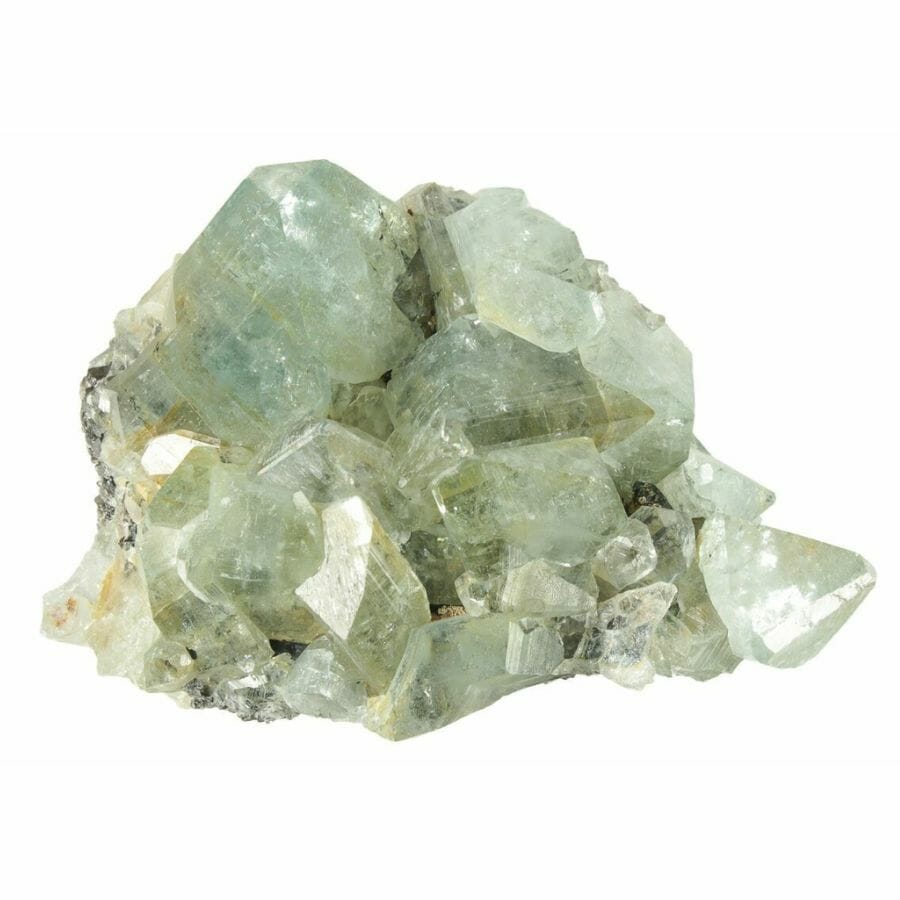
Relative density (also known as specific gravity) in gemstones refers to how heavy or light they feel in the hand for their size. It’s a measure of how much matter is packed into a specific space. There’s a noticeable difference between citrine and topaz in this department.
Citrine, with its lovely sun-kissed hues, has a density of around 2.60 to 2.70 g/cm^3. If someone were to hold a chunk of citrine, it might feel somewhat light, especially when compared to other minerals of the same size.
Now, switch over to topaz, and there’s a clear difference. It’s a denser mineral, with values generally ranging between 3.49 to 3.57 g/cm3.
In simple terms, this means that a piece of topaz of the same size as that citrine would feel noticeably heavier in hand.
For gem enthusiasts, these differences in density can be useful. Imagine coming across a yellow gemstone at a market, uncertain if it’s citrine or topaz. By getting a feel of its weight, a quick clue could be picked up about its identity.
While it’s not a foolproof method, it’s a handy trick in the world of gemstone identification.
Fluorescence – Citrine is not fluorescent
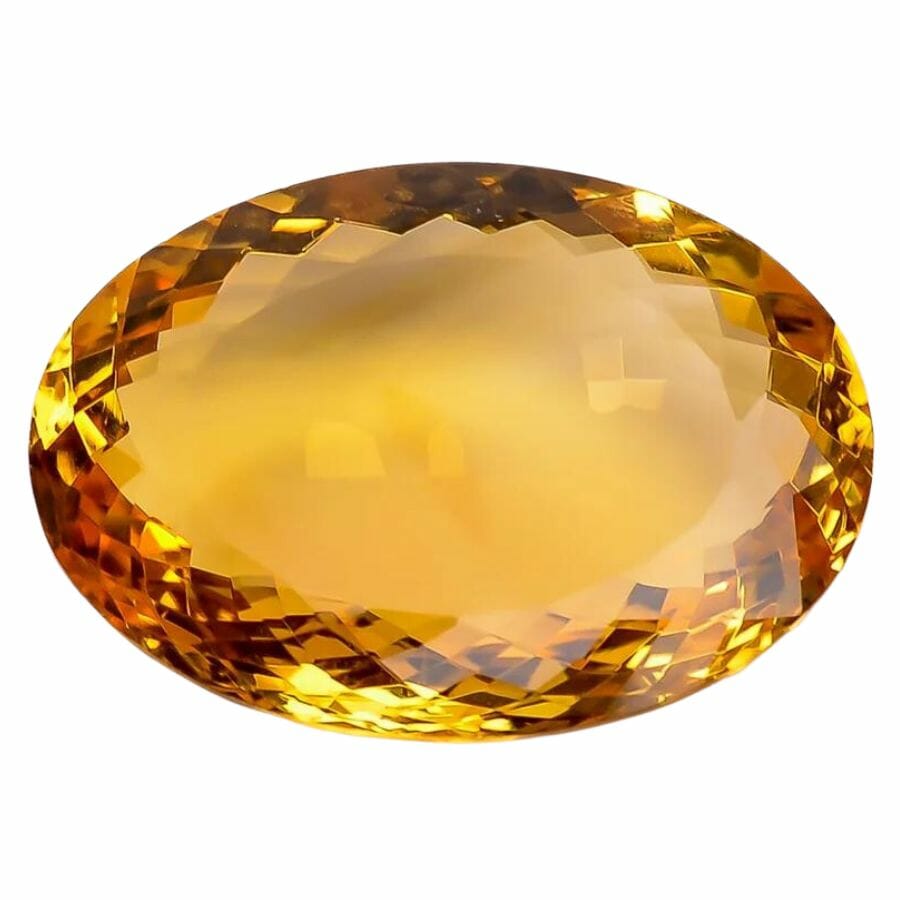
Fluorescence is a captivating phenomenon in the world of gemstones. When certain minerals are exposed to ultraviolet (UV) light, they can emit a visible glow. It’s like a hidden light show, revealing a side of gemstones many don’t often see.
Citrine is a bit of a wallflower in the fluorescence dance. Typically, citrine doesn’t exhibit a strong fluorescence under UV light.
If someone were to shine a UV light onto citrine, it would mostly remain unchanged, keeping its usual warm colors without much of a glow.
Topaz, however, loves to steal the show. Topaz can fluoresce under short-wave UV light, glowing a rich golden yellow. It’s as if the gem holds a little piece of sunlight inside.
Switch over to long-wave UV light, and topaz changes its tune, glowing a subtle and lovely cream color.
Price – Topaz can be more expensive
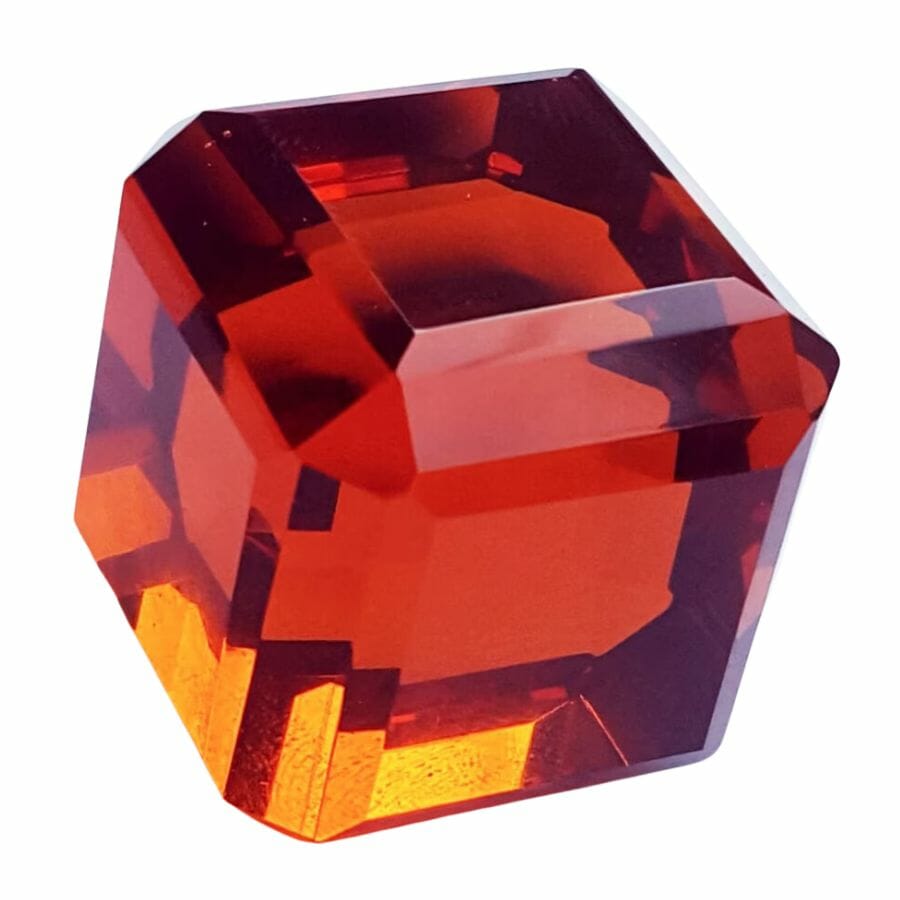
When navigating the sparkling world of gemstones, price often comes into the spotlight. Citrine and topaz, though sometimes visually similar, have notable differences in their price tags.
Citrine, with its sunny hues, is generally friendly on the wallet. One reason for value affordable value of citrine is its abundance. Nature has been generous with citrine, making it relatively easy to find.
This abundance translates to lower prices in the market. So, for those looking to add a bit of shimmer without breaking the bank, citrine is often a go-to choice.
On the flip side, topaz can vary greatly in price. While some colors of topaz are more common and reasonably priced, others, like the pink or imperial topaz, can command top dollar.
These rare shades of topaz are sought after by collectors and enthusiasts alike. Their unique colors combined with their rarity make them prized possessions in the gem world.
So, while citrine might be the choice for someone seeking beauty on a budget, topaz offers a range from affordable options to splurge-worthy rarities. Each gemstone, in its own right, brings value and charm to the table.
Location – They are found in different countries
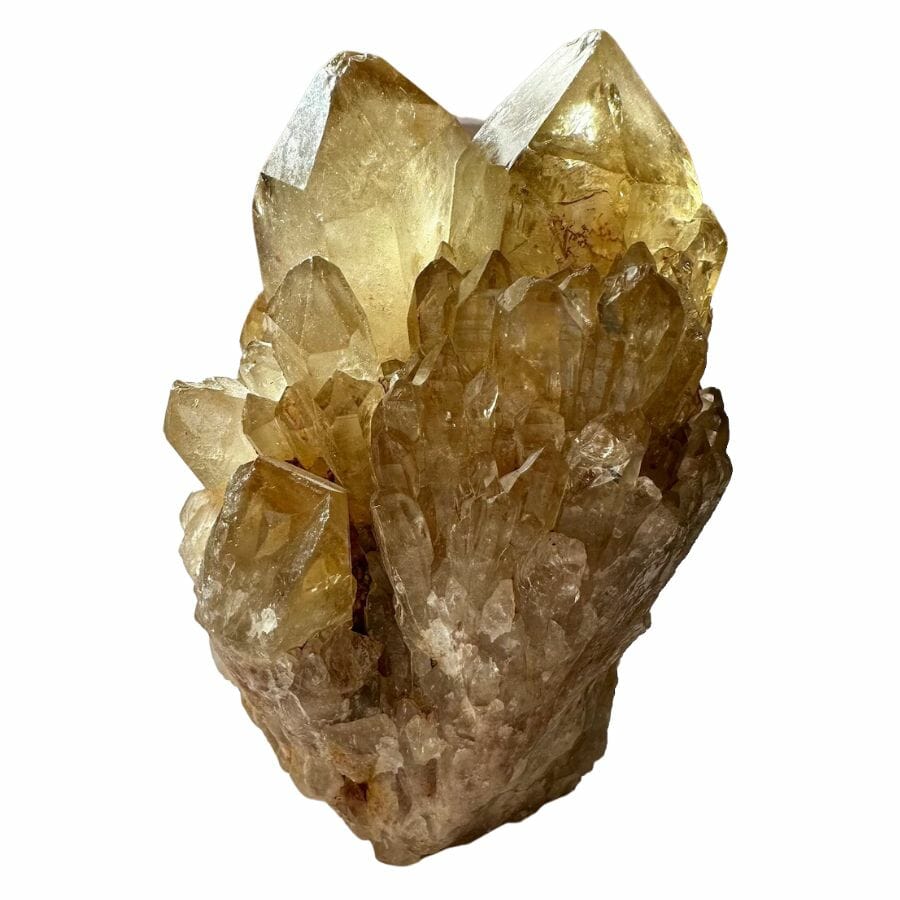
Citrine has been discovered in diverse places. Brazil, Madagascar, and Spain have been known to offer up this gem.
It also makes appearances in countries like Norway, Russia, and Bolivia, particularly in the Anahi mine. The Austrian Alps, Zambia, Kazakhstan, and Australia are other notable sources.
However, it’s worth noting that genuine, natural citrine is a bit of a rarity. Many citrines on the market are amethysts that have undergone heat treatment to achieve that distinct citrine look.
Topaz, on the other hand, boasts a broader geographical spread. It coexists with minerals like fluorite and cassiterite in regions such as Russia’s Ural and Ilmensky mountains, Afghanistan, and Sri Lanka.
Europe sees its share of topaz in countries like the Czech Republic, Germany, Norway, and Italy. Even Japan, Brazil, Mexico, Australia, Nigeria, and the U.S. have deposits of this gem.
If you’re interested in topaz, you might want to look into gemstone mining near you. There might be some deposits in areas nearby.
Brazil, especially, is a significant player in the topaz game. Some topaz crystals from this region are mammoth, weighing in at hundreds of pounds.
In essence, while both these gems sprinkle their charm worldwide, their journey from beneath the Earth’s crust to the jeweler’s display varies greatly based on location.
Topaz vs Citrine – The Similarities
Citrine and topaz have a lot of differences, but they have some things in common too. From how they look to where they’re found, these gemstones share some interesting characteristics.
Let’s explore what makes them similar and why they’re both so fascinating!
Appearance – Both citrine and topaz are usually clear and transparent
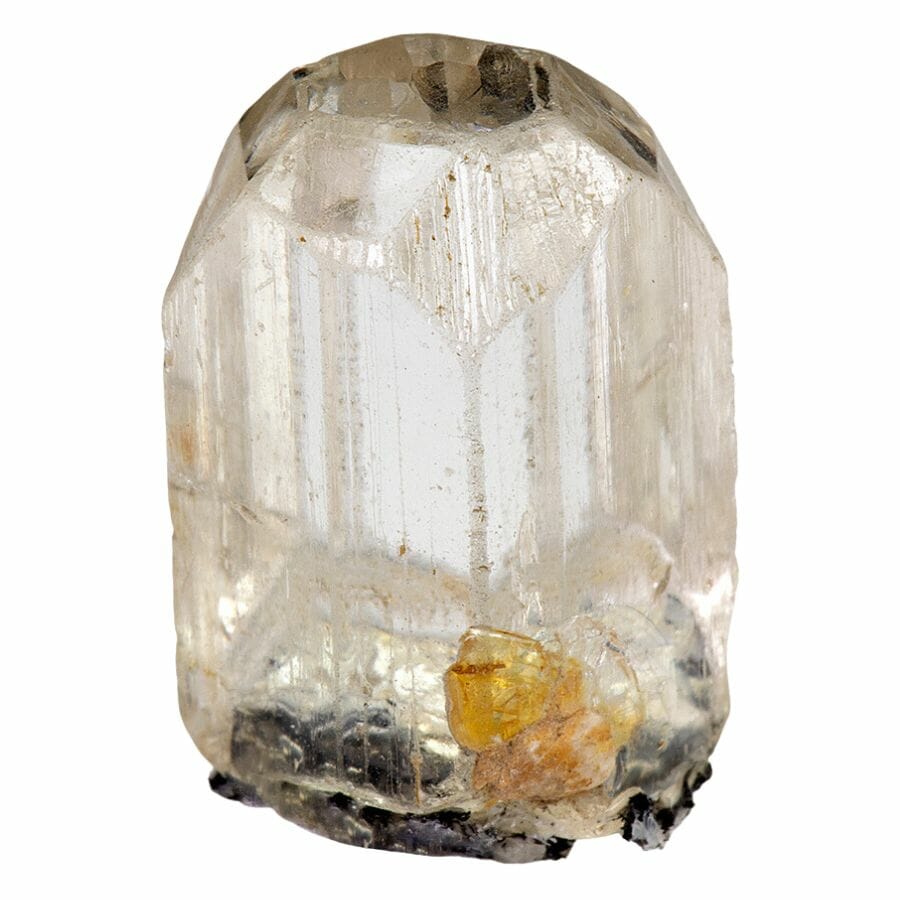
Clarity is often a prized characteristic in gems, and both citrine and topaz excel in this aspect. At a glance, these two stones can sometimes be mistaken for each other due to their similarities in appearance, especially when it comes to their clarity.
Both citrine and topaz typically exhibit a pristine transparency, free of any visible inclusions. This shared trait allows light to pass through them effortlessly, enhancing their shine and brilliance.
The result is stones that sparkle and capture attention with their pure, unobstructed beauty.
Streak – The two minerals leave a white streak
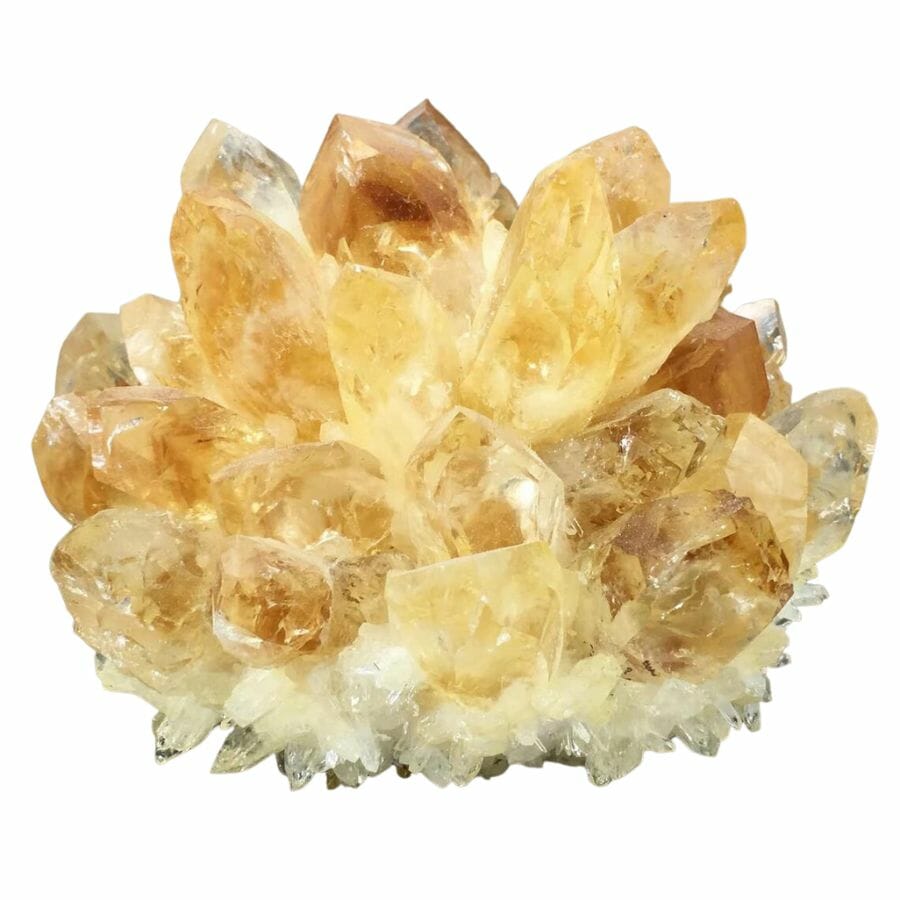
Streak testing is a fascinating aspect of gemology and mineralogy. Even though a mineral might sparkle with vibrant colors, its streak can tell a different story. Both citrine and topaz exemplify this interesting phenomenon.
Citrine, with its radiant shades ranging from golden yellow to reddish-orange, might lead someone to expect a streak with a hint of color. However, when citrine is dragged across a streak plate, it consistently reveals a white streak.
Topaz, a gem that wears many color hats from blues and pinks to fiery oranges, behaves similarly. Despite the broad spectrum of its appearance, topaz will also leave a white streak upon testing, matching citrine step for step in this respect.
Formation – Citrine and topaz can both be found in igneous rocks
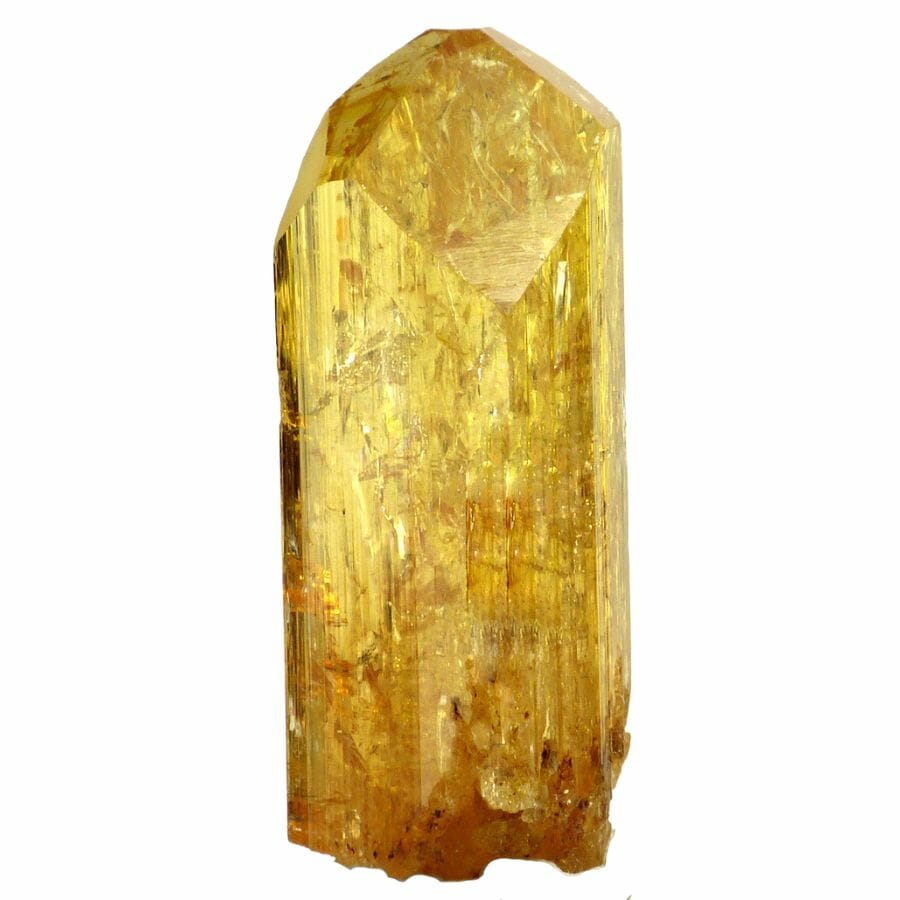
Peeling back the layers of the Earth’s crust reveals a fascinating world of gemstone creation. Both citrine and topaz owe their existence to specific geological processes and conditions.
Starting with citrine, its formation is often linked to igneous rocks. These rocks form from the cooling and solidification of magma or lava.
As this molten material rises and cools, citrine can form, especially when there are the right conditions and elements present.
Additionally, citrine can be found in hydrothermal veins. These are pathways within rocks where heated water moves and deposits minerals. As this hot water, rich in various elements, cools down, minerals like citrine begin to crystallize and grow.
On the other side, topaz has a slightly different origin story. Some of the best rockhounding locations for finding topaz are areas with pegmatites.
Pegmatites are coarse-grained igneous rocks, where large crystals often grow due to the slow cooling of magma.
The conditions in pegmatites allow for the formation of many unique and beautiful minerals, with topaz being one of them.
Additionally, topaz can also be found in vapor cavities within rhyolite lavas. Rhyolite is a type of volcanic rock, and as it erupts and cools, gases trapped inside can create pockets or cavities.
Within these spaces, under just the right conditions, topaz crystals can form.
Luster – They both gleam like glass
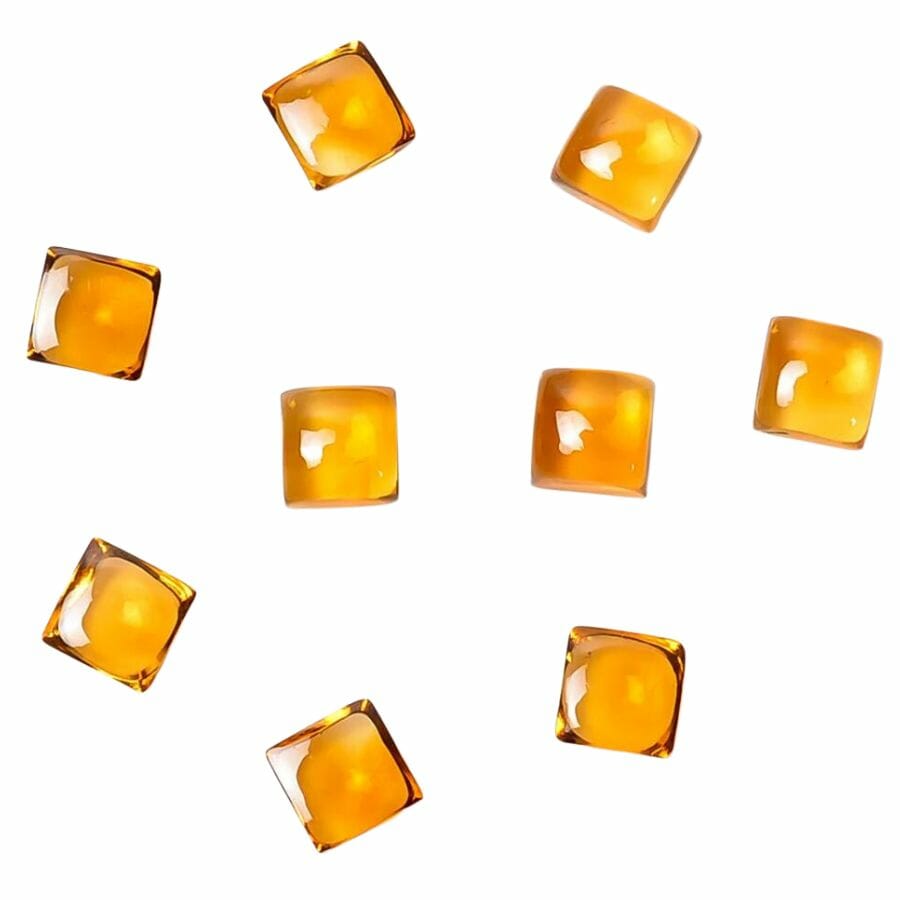
Luster is all about the shimmer and shine of a gemstone, the way it reflects light and captures our attention. Both citrine and topaz share this particular attribute, which contributes to their appeal in the world of gemstones.
When you look at a piece of citrine, you’re met with a vitreous, or glass-like, luster. This means it reflects light in a manner similar to how light bounces off a clean piece of glass.
This quality is especially captivating when it plays off citrine’s warm golden hues, amplifying its sunny demeanor.
Topaz, on the other hand, exhibits the same kind of luster. Whether you’re admiring a blue, pink, or even a clear piece of topaz, the vitreous luster is evident.
The light dances on the stone’s surface, enhancing its natural beauty and making it gleam, much like citrine.
Magnetism – Neither mineral is magnetic
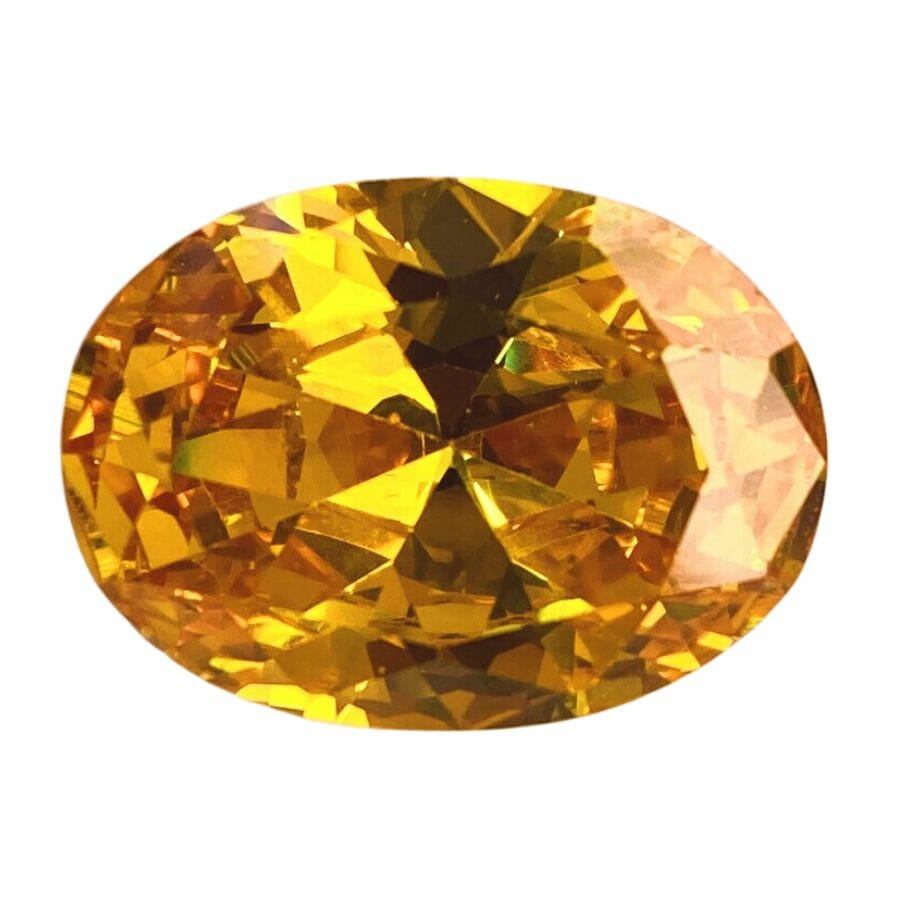
Magnetism in minerals can be a fascinating topic, as it allows for a deeper understanding of their properties. Neither citrine nor topaz is drawn to a magnet.
Citrine, with its golden glints, doesn’t have any magnetic properties. If you were to bring a magnet close to a piece of citrine, you’d find that the stone remains unfazed, showing no attraction whatsoever.
It stands as a testament to citrine’s non-magnetic nature, which is consistent across all samples of this beautiful gemstone.
The same can be said for topaz. Regardless of its color – be it the cool blues, warm oranges, or any shade in between – topaz remains indifferent to the pull of a magnet.
Just like citrine, it stands unmoved, unaffected by the presence of a magnetic force.
Conductivity – The two are poor conductors of electricity
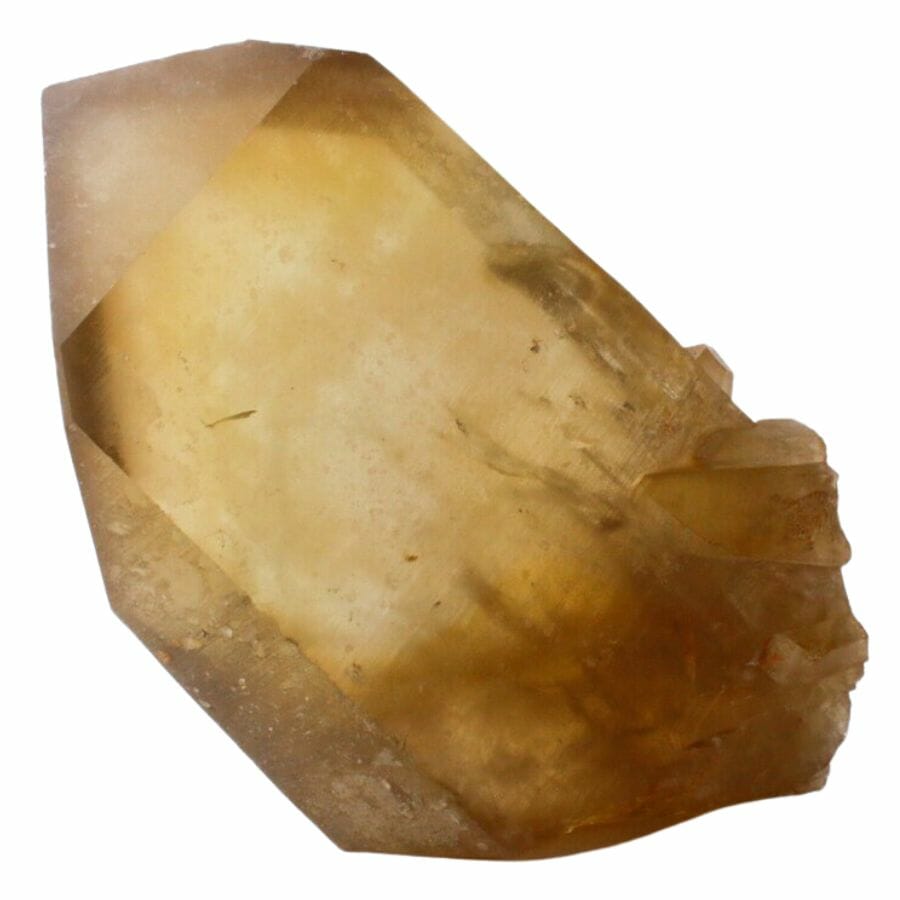
When people think of gemstones, they often picture their brilliance, color, or use in jewelry, but rarely their conductivity.
However, how a gem conducts (or doesn’t conduct) electricity can be an intriguing aspect. Citrine and topaz are prime examples of this.
Citrine, a sparkling gem with shades ranging from pale yellow to deep reddish-brown, isn’t just pretty to look at. This variety of quartz also happens to be a poor conductor of electricity.
So, if you were ever curious and tried to pass an electric current through a citrine stone, you’d find it doesn’t let much through.
Now, take topaz. It might surprise some to learn that despite its varied hues and differing chemical composition from citrine, topaz is also not on good terms with electricity.
Its insulating properties ensure it resists the flow of electrical current just as well as citrine does.
The Easiest Ways to Tell Citrine and Topaz Apart
While citrine and topaz are both popular gemstones, they have unique features that set them apart. By looking at things like fluorescence, hardness, and cleavage, we can tell them apart.
Shine a UV light
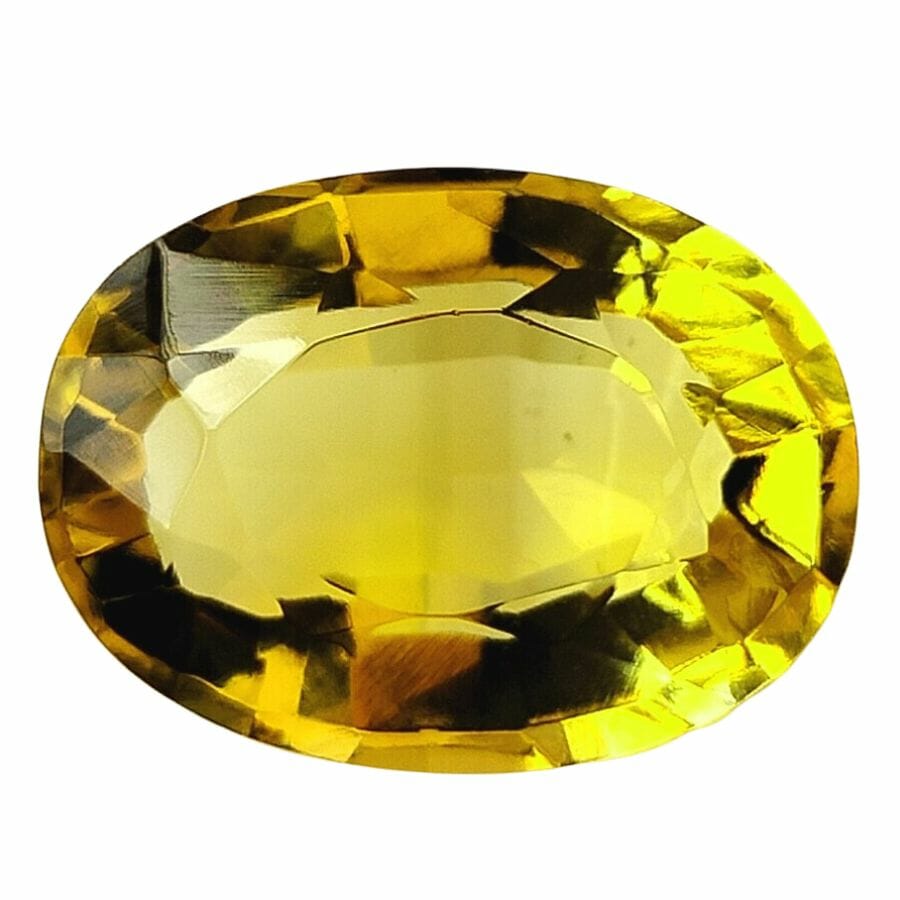
Using fluorescence to distinguish between gemstones like citrine and topaz can be a fascinating experience. When exposed to UV light, many minerals reveal hidden characteristics that are not visible to the naked eye.
Citrine typically stays under the radar in this test. When exposed to UV light, it usually remains non-reactive and doesn’t display strong fluorescence. This means there’s no distinct glow or color change that emerges under the UV light.
On the other hand, topaz loves to stand out. Shine a short-wave UV light on it, and it typically lights up with a golden yellow glow, reminiscent of a late summer afternoon.
When illuminated with a long-wave UV light, it shifts to a more understated cream color. The gentle, creamy glow can be a sharp contrast to the boldness it displays under the short-wave UV.
So, if you ever need to distinguish citrine vs topaz, a UV light test can be a handy tool.
Test the mineral’s hardness
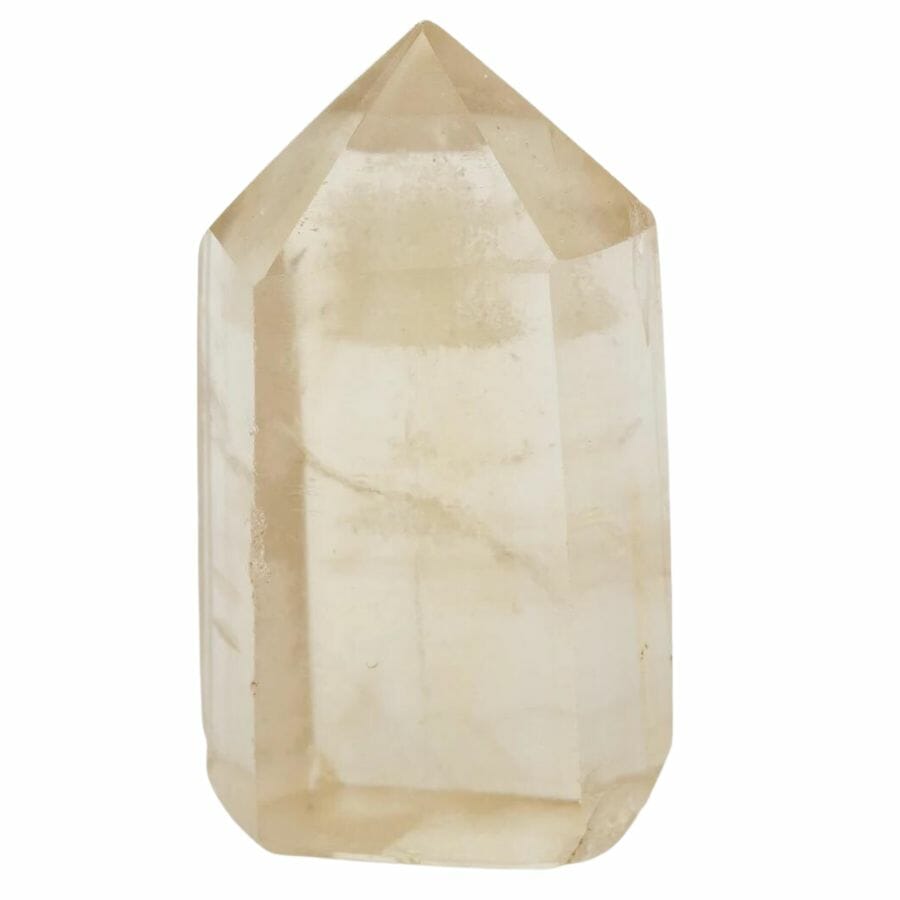
Hardness is a valuable tool in distinguishing between minerals and gemstones. As we previously mentioned, the Mohs scale is commonly used to rank minerals from the softest to the hardest.
On this scale, citrine, being a variety of quartz, has a score of 7. This means while it’s pretty resistant to scratches, it’s not impervious. Everyday objects or other minerals can leave marks on it.
Topaz, on the other hand, has a hardness of 8. This makes it noticeably harder than citrine.
In practical terms, if you had a piece of topaz and a piece of citrine side by side and tried scratching them with the same object, the citrine would likely show marks before the topaz would.
This difference in hardness can be useful for jewelers and gem enthusiasts. If someone is looking to identify an unknown yellow gem, a simple scratch test with a known material might help narrow down the possibilities.
Remember, though, that deliberately scratching a gem isn’t always the best idea, especially if it’s valuable or part of a piece of jewelry. But understanding the relative hardness can provide clues to make an informed guess.
Evaluate the mineral’s cleavage
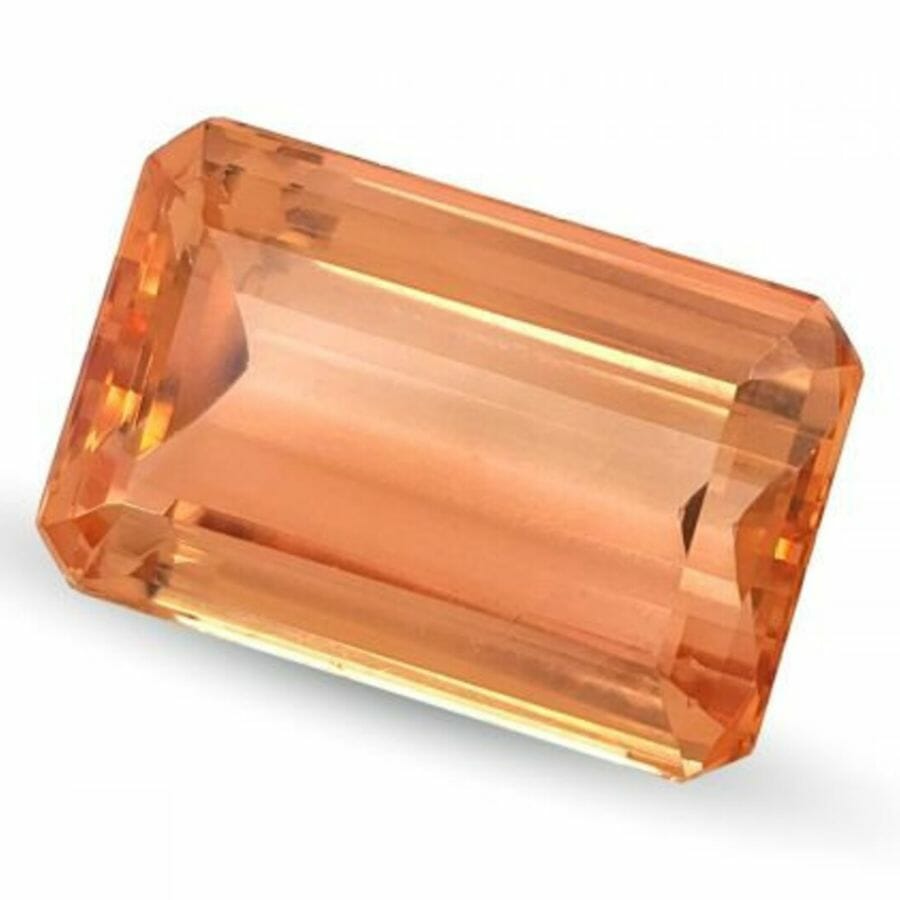
Cleavage is a unique property of minerals and gemstones, and it’s all about the way they break. Imagine breaking a piece of chocolate – some chocolates break smoothly along the lines, while others might shatter in unexpected ways.
When you think about citrine, picture it with curvy, uneven edges where it has broken in the past. This pattern, resembling the edge of a clamshell, is called conchoidal fracture.
When dealing with rough stones cleavage can be especially valuable. Once they’ve been polished to smooth edges it becomes much more difficult to use it as a identifying factor.
It’s not the clean, straight split you might expect, but rather a more rounded and wavy break.
Topaz, on the other hand, has a particular talent for splitting cleanly and evenly in one direction. This is called perfect cleavage.
When you hear “perfect,” it doesn’t mean it’s better – it simply means the break is predictable and smooth.
This can pose challenges for gem cutters. They have to be extra cautious when working with topaz to ensure they don’t accidentally split the stone along its cleavage plane.

